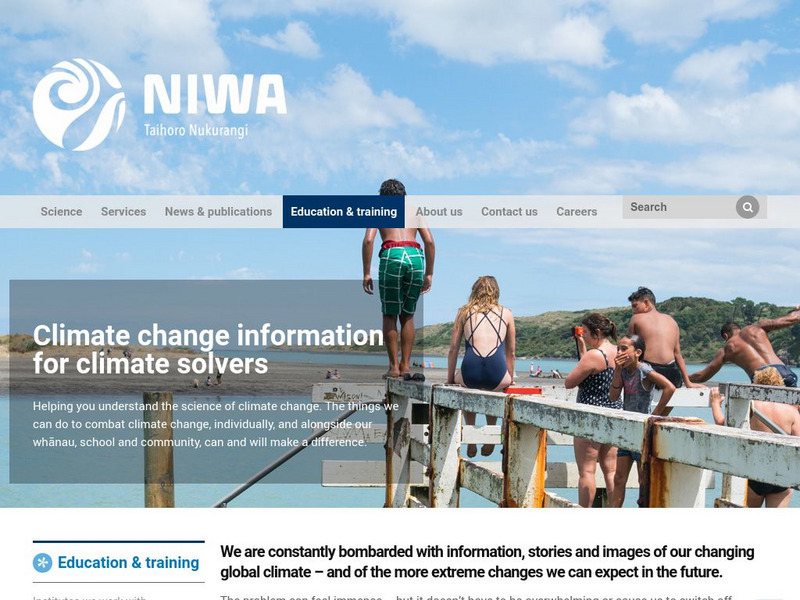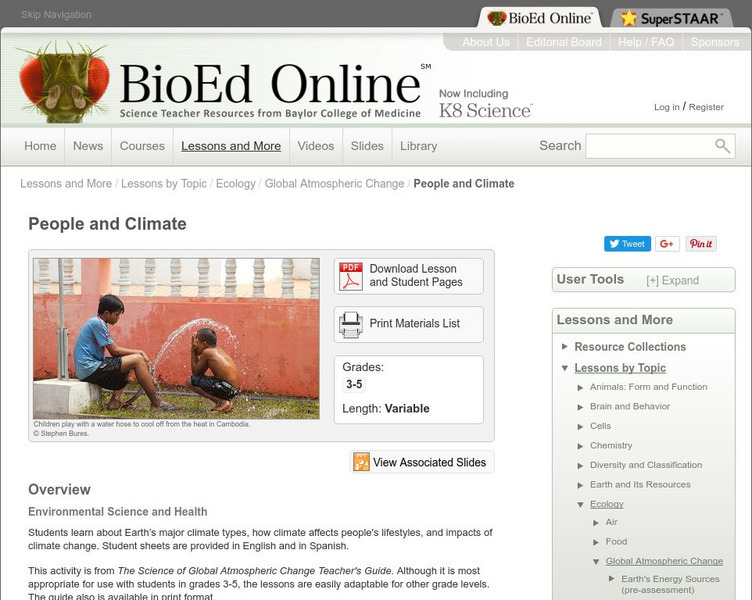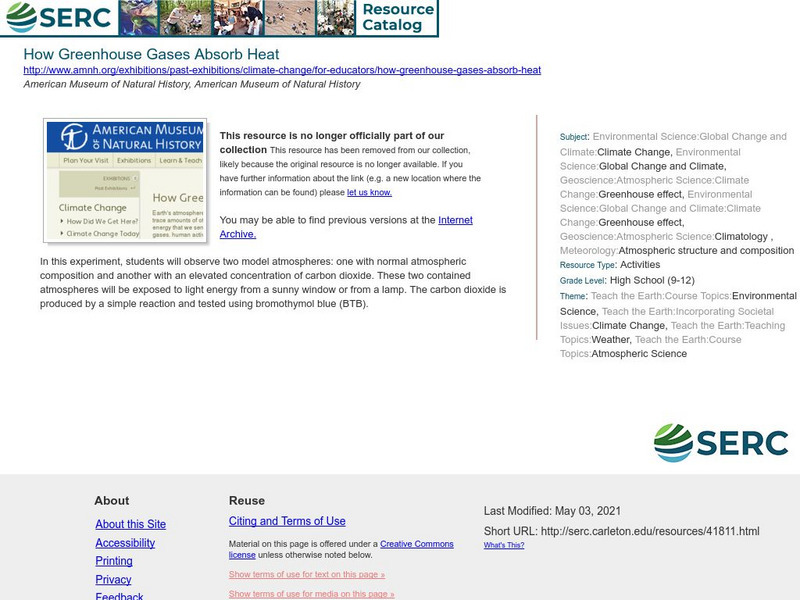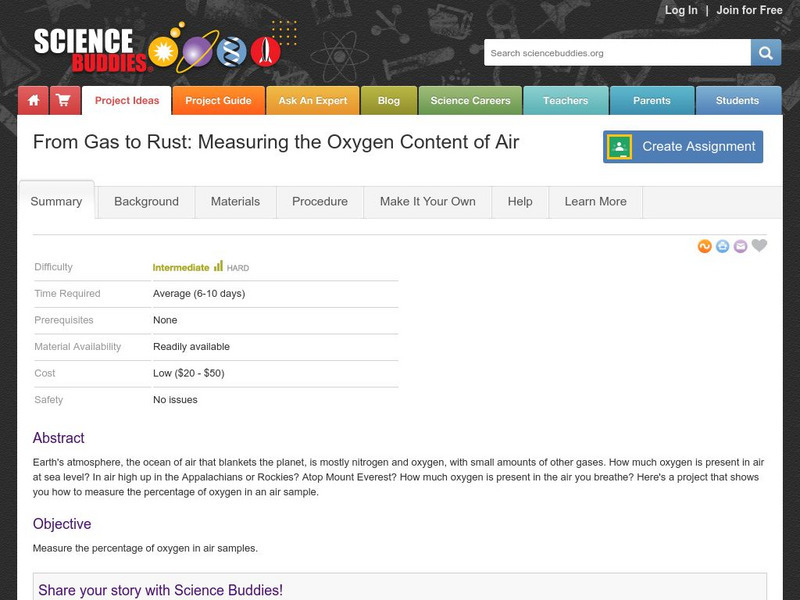Hi, what do you want to do?
BioEd Online
Bio Ed Online: Air, Atmosphere and Living Systems
This unit includes a complete set of science lessons that enable students to creatively explore basic concepts related to air and the atmosphere, air quality, and associated issues, such as allergens in the places we live, study and work.
Science Education Resource Center at Carleton College
Serc: Analyzing Greenhouse Gases and Global Temperature Data Over Time
In this activity, young scholars plot data on the concentrations of various greenhouse gases in Earth's atmosphere and look for trends. They will learn that greenhouse gases allow the Sun's light to pass through them to the surface of...
Vision Learning
Visionlearning: Atmosphere and Oceans: Factors That Control Earth's Temperature
An explanation of how temperature is affected by the composition of the atmosphere and how energy flows in and out of Earth's atmosphere.
NASA
Nasa: The Space Place: Life in a Greenhouse
Use this website to discover how the Earth acts as a greenhouse due to the production of greenhouse gases. Find out what ozone it, where it's found, and even view a video showing the different concentrations of ozone in the atmosphere.
Other
Interactions Between the Atmosphere & Hydrosphere [Pdf]
A discussion of the interactions between the four spheres of Earth and how they affect weather and climate. The slideshow is divided into two parts. The first deals with interactions between the atmosphere and the hydrosphere and the...
Other
Niwa: Climate Change, Global Warming, and Greenhouse Gases
Want to learn more about climate change, global warming, and greenhouse gases? This web page contains links to websites around the world concerned with providing information about these. Topics include climate shift, greenhouse effect,...
BioEd Online
Bio Ed Online: The Science of Global Atmospheric Change: People and Climate
The impact that climate and climate change have on humans is explored in this instructional activity. Learners learn about climate zones, and factors that affect climate, e.g., proximity to the ocean and greenhouse gases. The...
BioEd Online
Bio Ed Online: Finding the Carbon in Sugar
Students learn that fossil fuels release energy when they are burned, and this takes the forms of light, heat, gases, etc. In this lesson they explore combustion with a candle and with sugar. The lesson and accompanying PowerPoint can...
University Corporation for Atmospheric Research
Ucar: What's in the Air?
Air is a mixture of naturally occurring gases and human-made air pollutants. Learn more about these gases and the role they play in our atmosphere.
Exploratorium
Exploratorium: Ice Stories: Dispatches From Polar Scientists: Greenhouse Gases
Polar scientists offer an article identifying the research and observations made on greenhouse gases. Why is there so much carbon dioxide in the atmosphere today? Scientists work diligently to determine the causes and effects of these...
South Carolina Educational Television
Know It All: The Properties of the Atmosphere
For this lesson, 6th graders will develop and use models to exemplify the properties of the atmosphere and the relative scale in relation to the size of Earth.
Concord Consortium
Concord Consortium: Stem Resources: Greenhouse Gases
Do you understand the relationship between temperature and carbon dioxide in our atmosphere? This computer model shows factors such as clouds and carbon dioxide that could cause global temperatures to rise. Students investigate how the...
Climate Literacy
Clean: Greenhouse Gases: A Closer Look
One activity in a larger module covering different aspects of the major greenhouse gases including some of the ways in which human activities are affecting the atmospheric concentrations of these key greenhouse gases.
University Corporation for Atmospheric Research
Ucar: What Do Soda and the Oceans Have in Common?
Students will use soda to explore how carbon dioxide is able to dissolve into liquid. They will learn about Henry's law, which describes how the solubility of gas into liquids is dependent on temperature and develop hypotheses about how...
American Geosciences Institute
American Geosciences Institute: Earth Science Week: Chemistry of Burning
In this activity, students use pipe cleaners and foam balls to build a model of a hydrocarbon molecule. They then modify it to demonstrate the chemical reaction that happens when the hydrocarbon is burned.
Science Education Resource Center at Carleton College
Serc: How Greenhouse Gases Absorb Heat
In this experiment students observe two model atmospheres: one with normal atmospheric composition and another with an elevated concentration of CO2. These two contained atmospheres will be exposed to light energy in a sunny window or...
PBS
Pbs Learning Media: Global Warming: Graphs Tell the Story
Examine these graphs from the NOVA/ FRONTLINE Web site to see dramatic increases in the temperature of Earth's surface and greenhouse gases in the atmosphere.
King's Centre for Visualization in Science
Explaining Climate Change: Lesson 2: Is Climate Change Happening?
This is the second lesson in a series of learning modules on the topic of climate change. It examines what climate change is, how it relates to greenhouse gas concentrations over time, and temperature trends. Includes comprehension...
King's Centre for Visualization in Science
Explaining Climate Change: Lesson 3: The Chemistry of the Greenhouse Effect
This is the third lesson in a series of learning modules on the topic of climate change. It takes a look at how greenhouse gases cause warming and affect Earth's climate. Includes comprehension questions and interactive tools for...
CK-12 Foundation
Ck 12: Earth Science: Reducing Greenhouse Gas Pollution Study Guide
[Free Registration/Login may be required to access all resource tools.] This study guide summarizes key points about global efforts to reduce greenhouse gases in the atmosphere. Includes a few questions to check for understanding.
Other
Breathing Earth
Breathing Earth layers data about rates of carbon dioxide emission along with birth and death rates onto a map of the world in a real-time simulation of one of the principal greenhouse gases in the Earth's atmosphere, CO2.
Science Buddies
Science Buddies: From Gas to Rust: Measuring the Oxygen Content of Air
Earth's atmosphere, the ocean of air that blankets the planet, is mostly nitrogen and oxygen, with small amounts of other gases. How much oxygen is present in air at sea level? Is air high up in the Appalachians or Rockies? Atop Mount...
University Corporation for Atmospheric Research
Ucar: Methane
Brief article explores methane, a flammable gas found in the Earth's atmosphere.
NASA
Space Math: Nasa Satellite "Sees" Carbon Dioxide [Pdf]
Using this map from NASA you can calculate the concentrations of carbon dioxide in the atmosphere. Solve the four problems and you will see how concentrations are spread across the globe and where there are regional differences.







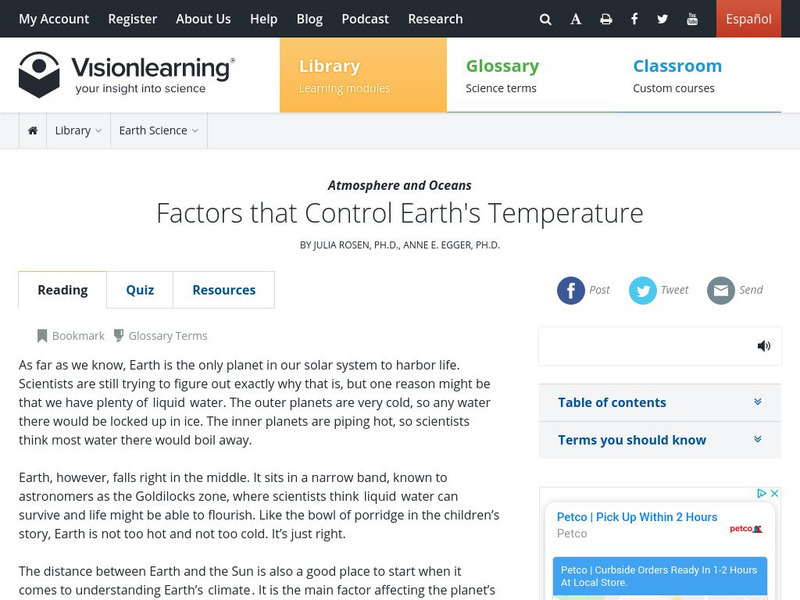
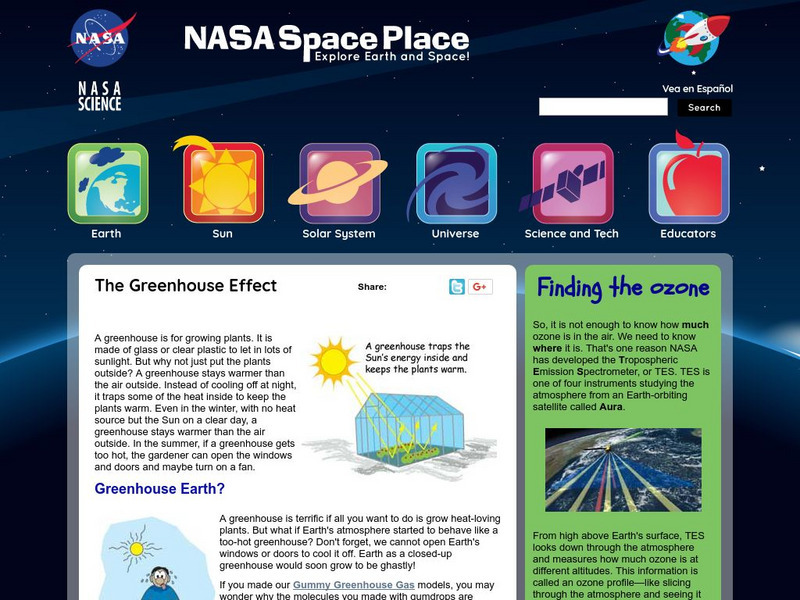
![Interactions Between the Atmosphere & Hydrosphere [Pdf] PPT Interactions Between the Atmosphere & Hydrosphere [Pdf] PPT](https://static.lp.lexp.cloud/images/attachment_defaults/resource/large/FPO-knovation.png)
